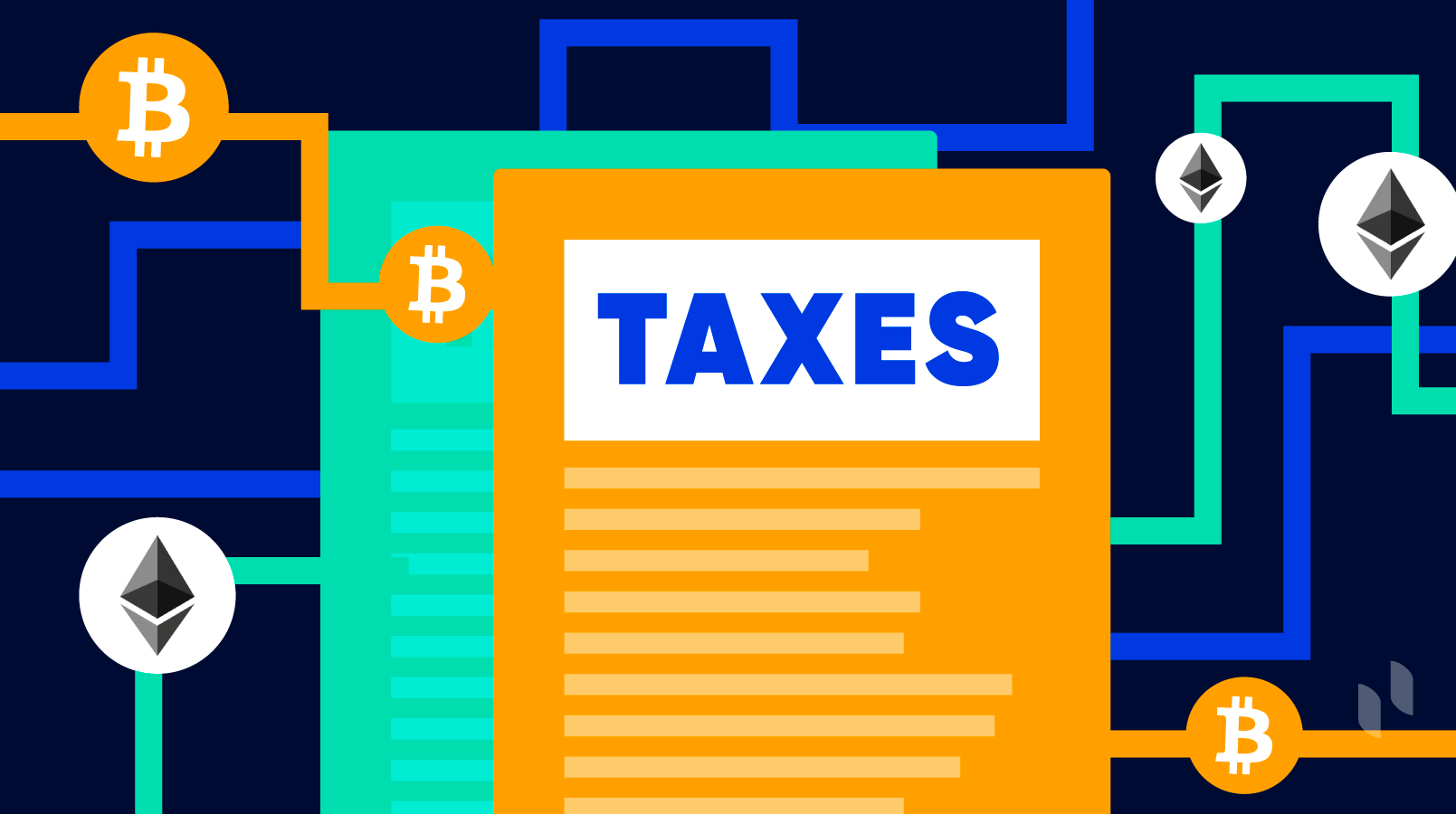Cryptocurrency has been a popular investment in recent years. As it gains popularity, the knowledge of calculating crypto gains becomes more important. You’ll need to know your cumulative gains or losses associated with crypto to pay your tax bill. Here’s what you need to know about crypto gains and taxes in Canada.

When Is Crypto Taxable?
In Canada, cryptocurrency is taxable in most cases, but there are a few exceptions. For instance, Canadians don’t need to pay taxes to buy crypto or simply hold it. That said, taxpayers may need to pay capital gains or business income tax after selling or mining crypto.
The Canada Revenue Agency doesn’t consider cryptocurrency as legal tender. So, while taxpayers need to pay taxes on the currency, the CRA treats it differently than legal tender. Instead of treating crypto like any legal tender, the CRA treats it as it would a commodity under the Income Tax Act.
This means that Canadians need to report gains and losses from
. Failing to report this is illegal, even if gains or losses are incurred via converting one digital currency to another.
The CRA also treats crypto as a capital gain or business income for individuals who earn profits from these transactions. When the individual experiences a loss, it becomes a capital or business loss. On the flip side, taxpayers need to outline crypto transactions that result in income or capital gains.
However, it’s important to note that not every cryptocurrency transaction counts as a business activity. Cryptocurrency in terms of business income is 100% taxable, while the percentage drops to 50% for capital gains.
Aside from these two approaches to taxing cryptocurrency, the CRA may also treat it as a barter transaction. To consider crypto a barter transaction, the individual uses it to pay for a service or good. Since the CRA doesn’t view crypto as legal tender, these transactions count as barters.
When Does Cryptocurrency Count As Business Income?
As mentioned, there are specific scenarios where cryptocurrency gains and losses count as business income. The CRA uses certain qualifiers to categorize crypto as business income. There are four main qualifiers:
A product or service is promoted
The individual (or business) intends to make a profit, regardless of the likelihood
The individual does activities in a business-like manner, such as developing a business plan or acquiring inventory or capital assets.
The activity is for commercial reasons.
In addition, the CRA counts cryptocurrency mining, exchanges, trading, and ATMs as cryptocurrency businesses. In some cases, new entrepreneurs in the early stages of business may not have to report associated business until the following year’s taxes. The individual often needs to repeat the activities for the CRA to consider their business income.
That said, one transaction might be enough for the CRA to consider it as business income, so it’s essential to work with a knowledgeable individual (such as a tax accountant familiar with crypto taxation) to determine whether reporting is necessary.
As a friendly reminder, always consult with a tax professional when it comes to cryptocurrency taxes.
What is Capital Gain?

While the CRA taxes cryptocurrency as business income in some scenarios, it may also tax crypto as a capital gain. Like business income taxation, there are specific settings where the CRA taxes crypto as a capital gain, including:
If selling crypto isn’t a business income
If the individual makes a profit from selling it
So, if the disposition of the currency doesn’t qualify as business income and it sells for more than its purchase price, the CRA considers it a capital gain. The CRA requires taxpayers to recognize crypto meeting these standards as income in their taxes. However, the CRA only taxes capital gain half of its total worth.
Taxpayers can utilize capital gains to offset capital losses associated with selling cryptocurrencies but not to offset losses from other sources. The taxpayer can carry losses forward for up to three years if capital losses exceed capital gains.
How to Calculate Crypto Gains
When individuals start working with cryptocurrencies, they’ll need to know how to calculate their cumulative crypto gains and losses. This is an integral part of filing taxes in Canada, so taxpayers need to be familiar with the process of how to report and pay correctly.
This process involves several steps, some of which require accurate tracking. Here’s what the process entails:
1. Begin Tracking Transactions
First, the taxpayer needs to track transactions and associated tax lots (record of tokens purchased or acquired in each transaction). Each tax lot will include specific information, including:
Date of sale
Date of acquisition
Fiat value at the time of acquisition
Fiat value at the time of trade/sale
Amount and currency of asset sold
Precise, detailed records are essential to this process, as failing to do so can make it tricky to find and fill in missing data that could affect your gains. For many people, the easiest way to track trades is with crypto tax software, as it automatically collects and tracks your transactions.
However, it’s worthwhile to note that using a crypto tax calculator may not account for special situations, so you should keep note of these scenarios (such as crypto scams and rug pulls, lost coins, and ICOs).
PS, Netcoins is working with
, a crypto tax software company, to make calculating and reporting crypto taxes easier for its users. Existing Netcoins users can also download monthly statements and crypto transactions from within their accounts to manually prepare tax reports if needed.
2. Pinpoint Cost Basis
Another integral aspect of this process is isolating your cost basis. This is a crucial term in cryptocurrency tax and indicates the asset's original value, which is necessary for tax purposes.
In essence, calculating crypto capital gains or losses comes down to a simple equation: proceeds - cost basis = capital gain or loss.
Of course, variability may affect your cost basis, primarily due to accounting methods and transaction fees. Many transactions involve transaction fees or Ethereum gas fees the individual pays to exchanges or protocols. The individual can often add the fees to the asset’s cost basis to decrease capital gains or increase capital losses.
For example, let’s say an individual swaps 3,0000 USDC for 1 ETH on Uniswap. In this transaction, the individual had to pay $100 in fees, which they can add to their ETH’s cost basis, making it $3,100.
3. Isolate The Capital Gains Tax Rate
Next, the individual needs to isolate their capital gains tax rate. Unlike the U.S., Canadian taxpayers don’t have to pay capital gains tax rates contingent on the length of time they hold the asset.
Instead, the CRA taxes transactions at the same rate as the individual’s federal and provincial income tax rates. As mentioned, the individual will
only pay tax on half of their total capital gain
.
Since tax rates vary based on the individual’s income and location (provincial tax rates vary), each individual should expect to pay slightly different taxes on their capital gains. The table below outlines specific tax rates at the federal level and in each province.
Federal Income Tax Rates
Tax Rate
Income (2022)
15%
On your first $50,197 of taxable income
20.5%
$50,197 to $100,392
26%
$100,392 to $155,625
29%
$155,625 to $221,708
33%
$221,708+
Newfoundland and Labrador Provincial Rates
Tax RateIncome (2022)
8.7%
First $39,147 of taxable income
14.5%
$39,147 to $78,294
15.8%
$78,294 to $139,780
17.8%
$139,780 to $195,693
19.8%
$195,693 to $250,000
20.8%
$250,000 to $500,000
21.3%
$500,000 to $1,000,000
21.8%
$1,000,000+
Prince Edward Island Provincial Rates
Tax RateIncome (2022)
9.8%
First $31,984 of taxable income
13.8%
$31,984 to $63,969
16.7%
$63,969+
Nova Scotia Provincial Rates
Tax RateIncome (2022)
8.79%
First $29,590 of taxable income
14.95%
$29,590 to $59,180
16.67%
$59,180 to $93,000
17.5%
$93,000 to $150,000
21%
$150,000+
New Brunswick Provincial Rates
Tax RateIncome (2022)
9.68%
First $44,887 of taxable income
14.82%
$44,887 to $89,775
16.52%
$89,775 to $145,955
17.84%
$145,955 to $166,280
20.3%
$166,280+
Ontario Provincial Rates
Tax RateIncome (2022)
5.05%
First $46,226 of taxable income
9.15%
$46,226 to $92,454
11.16%
$92,454 to $150,000
12.16%
$150,000 to $220,000
13.16%
$220,000+
Manitoba Provincial Rates
Tax RateIncome (2022)
10.8%
First $34,431 of taxable income
12.75%
$34,431 to $74,416
17.4%
$74,416+
Saskatchewan Provincial Rates
Tax RateIncome (2022)
10.5%
First $46,773 of taxable income
12.5%
$46,773 to $133,638
14.5%
$133,638+
Alberta Provincial Rates
Tax RateIncome (2022)
10%
First $131,220 of taxable income
12%
$131,220 to $157,464
13%
$157,464 to $209,952
14%
$209,952 to $314,928
15%
$314,928+
British Columbia Provincial Rates
Tax RateIncome (2022)
5.06%
First $43,070 of income
7.7%
$43,070 to $86,141
10.5%
$86,141 to $98,901
12.29%
$98,901 to $120,094
14.7%
$120,094 to $162,832
16.8%
$162,832 to $227,091
20.5%
$227,091+
Yukon Provincial Rates
Tax RateIncome (2022)
6.4%
First $50,197 of taxable income
9%
$50,197 to $100,392
10.9%
$100,392 to $155,625
12.8%
$155,625 to $221,708
12.96%
$221,708 to $500,000
15%
$500,000+
Northwest Territories Provincial Rates
Tax RateIncome (2022)
5.9%
First $45,462 of taxable income
8.6%
$45,462 to $90,927
12.2%
$90,927 to $147,826
14.05%
$147,826+
Nunavut Provincial Rates
Tax RateIncome (2022)
4%
First $47,862 of taxable income
7%
$47,862 to $95,724
9%
$95,724 to $155,625
11.5%
$155,625+
Quebec Provincial Rates
Tax RateIncome (2022)
15%
First $46,295 of taxable income
20%
$46,295 to $92,580
24%
$92,580 to $112,655
25.75%
$112,655+
Calculate Gains and Losses
After assembling their entire transaction history, individuals can begin calculating their capital losses and gains. The calculation process varies based on the individual’s tax rates, and whether the transaction resulted in a profit or loss, so many individuals find it easier to utilize a crypto tax calculator.
There are a few specific steps involved in using a crypto tax calculator, including:
Import necessary crypto exchange trade history plus transactions made off-exchange.
Be sure to import all historical data and double-check for correct tax calculations. Adjust the data as necessary to correct mistakes.
Select the appropriate crypto accounting method.
Export the tax forms.
Add crypto taxes to the tax return.
But again, please consult a professional accountant for proper and more detailed instructions on how to file your crypto taxes.
How To Minimize Crypto Taxes
Canadian taxpayers can utilize various tips and tricks to minimize the amount they need to pay on crypto taxes . While there are multiple options, here are a few popular methods:
Reduce Taxable Income
By reducing taxable income, a taxpayer can minimize their crypto tax payments. This process involves sifting through the tax code for applicable tax deductions and credits that can bring down the individual’s taxable income down.
Donate To Charity
Another option for minimizing crypto taxes is to donate the currency to a charity. By doing this, the taxpayer can avoid capital gains tax on the donation. On top of that, the taxpayer may receive a substantial tax deduction to claim on their next tax return. When they donate an asset, they can claim the appreciated fair market value at the donation date, which is a deduction against their taxable income.
Tax Loss Harvest
This strategy allows taxpayers to sell assets at a loss to offset capital gains. In turn, this process lowers the taxpayer’s tax liability. However, if the taxpayer chooses to employ this strategy, they must execute the necessary trades by the end of the tax year, as capital gains and losses are locked in after a certain point.
The Canadian tax year is January 1 through December 31 of the same year, so be sure to complete these trades before the last day of December.
Offset With Capital Losses
One way to minimize crypto taxes is to offset gains with losses. Crypto investors can utilize capital gains to offset losses, which works by subtracting applicable losses on crypto assets from taxable gains on cryptocurrencies.
However, while this works, it’s important to note that this strategy has parameters. When taxpayers recognize investment losses, they need to offset losses of the same type.
Have More Crypto Questions?
Reach out to our team at Netcoins to learn about buying bitcoin , ethereum , cardano , blockchain, and more.
The information provided in the blog posts on this platform is for educational purposes only. It is not intended to be financial advice or a recommendation to buy, sell, or hold any cryptocurrency. Always do your own research and consult with a professional financial advisor before making any investment decisions. Cryptocurrency investments carry a high degree of risk, including the risk of total loss. The blog posts on this platform are not investment advice and do not guarantee any returns. Any action you take based on the information on our platform is strictly at your own risk. The content of our blog posts reflects the authors’ opinions based on their personal experiences and research. However, the rapidly changing and volatile nature of the cryptocurrency market means that the information and opinions presented may quickly become outdated or irrelevant. Always verify the current state of the market before making any decisions.





.png)
.png)




